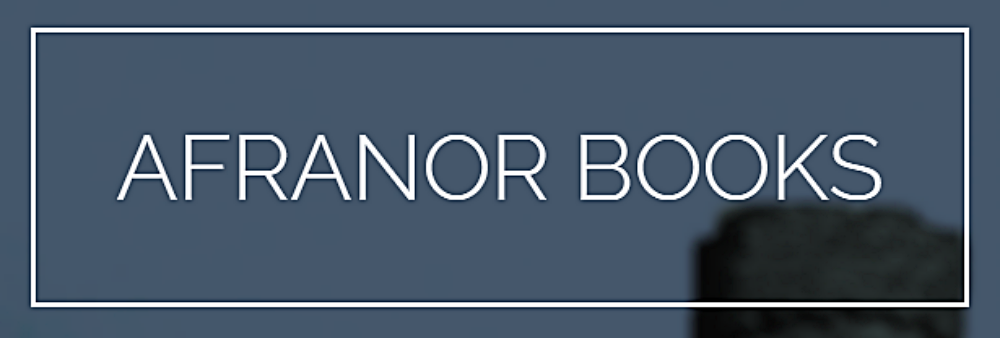This is a cross-posting with my Expat Reflections blog.
Coming up with titles for a book or a story can be either easy or frustrating.
In the case of the first two installments of the Dallas Green trilogy, the titles came fairly easily. In fact, I had the title
Maximilian and Carlotta Are Dead in my head for a long time before I seriously tackled the book itself. It was something a good friend of mine quipped during a discussion about Mexico, and it stuck in my head for years. When it came time for the sequel, the idea of
Lautaro’s Spear came to me fairly easily, keeping consistency with the mention of major historical figures of Latin America. The third book, though, was a real struggle. I considered all kinds of figures from Irish history and legend but found them all unworkable. I ended up on settling for
Searching for Cunégonde, which referenced a fictional character from French literature.
As for the fantasy books, I had had
The Three Towers of Afranor in my pocket since high school.
The Curse of Septimus Bridge was likewise straightforward, and I had the title of that book’s sequel settled (for now anyway) before I even started writing.
When coming up with titles for books, I try to come up with something that hasn’t been used before and which aspires to being unusual or unique. The goal, which may or may not be misguided, is to have something that would be easy to find in a web search.
Interestingly, coming up with a title for my recent short story proved to be one of the more frustrating experiences in coming with a title. I liked the idea of having a French word in it since one of the two main characters is French. Since the plot essentially consists of a meeting, the word
rendezvous lent itself. As a title, though, it is hardly unique. If you search that title on the Internet Movie Database, you find there are no fewer than 150 feature films, short films, TV episodes that have the title
Rendezvous, Rendez-Vous, Rendez-vous or some other variation as an original title or alternative (e.g. foreign language) title. The good news is that titles cannot be copyrighted, so there is nothing to stop writers like me from reusing them. The drawback is the risk of having one’s work overshadowed by a better known one with the same name.
It’s not just films and books that have titles though. Something one may not think about is that political cartoons can have titles. I was reminded of this fairly soon after I released my short story as a small e‑book. One morning I glanced at
The Times of London to see a cartoon by Peter Brookes lampooning U.S. Special Envoy for Climate John Kerry’s high-level meeting on climate in Shanghai in mid-April. Provocatively, it portrays Kerry and his Chinese interlocutor meeting cheerfully over the body of a Uighur while power plants belch out smoke in the background. The title is “Climate Change Rendezvous.”
This cartoon is a blatant homage to the famous
Evening Standard cartoon by David Low which appeared in September 1939. That one was called simply “Rendezvous,” and in that context the word harkens back to its original meaning (before the French began using it to mean appointment or date): a place for troops to assemble.
Low’s cartoon depicted Adolf Hitler and Joseph Stalin meeting with exaggerated gestures of politeness over the body of a fallen Polish soldier. The cartoon was published 27 days after the signing of the Molotov-Ribbentrop Pact containing a secret protocol dividing Poland into “spheres of influence” between the Soviet Union and Germany; 19 days after Germany invaded Poland; and three days after the Soviets invaded the country. This joint military action was the official beginning of World War II.
It seems harsh to draw a parallel between talks over climate change and a cynical accord to carve up a sovereign nation, but if political cartoonists know anything, it is that subtlety and nuance are not friends to those trying to get a point across in a single image. Also, shock has a certain value when it comes to attracting eyeballs—and hopefully, brains. In the end, the cartoon is not really about climate change.
The plight of the Uighurs, referenced in Brookes’s cartoon, has been ongoing since the region was forcibly incorporated into China in 1930 but has escalated since 2014 when the Chinese government began the internment of more than a million Muslims, mostly Uighurs, in state-sponsored camps. Testimonies have described suppression of religious practices, political indoctrination, forced sterilizations and abortions, and infanticides. Critics have labeled Chinese policy both ethnocide and cultural genocide and have compared it to the Holocaust. So the cartoon’s comparison to the Hitler and Stalin regimes is not that far off after all.
Still, it may be unfair to imply, as the cartoon seems to, a moral equivalence between the U.S. and China, given that the Chinese government bears the responsibility for its brutal treatment of the Uighurs. Still, the suggestion that the U.S. government may be turning something akin to a blind eye to the atrocities in pursuit of a possibly quixotic climate deal with the Chinese is arguably fair comment. A century from now, will history celebrate John Kerry’s efforts at climate negotiation—or will the question loom larger of why the world left Uighur men, women and children to their fate?
That recalls another use of the word rendezvous. Politicians as dissimilar as Franklin Roosevelt and Ronald Reagan have at critical moments memorably invoked a moral crossroads with a common phrase—rendezvous with destiny.








